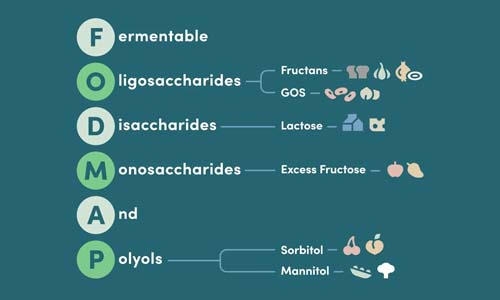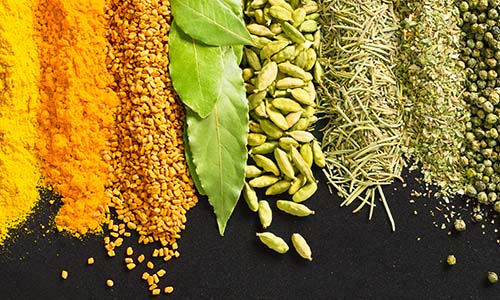Are Strawberries Low FODMAP? Your Complete Guide

If you're following a low FODMAP diet to manage IBS symptoms, you've probably found yourself scrutinizing every fruit in the grocery store. Strawberries are indeed low FODMAP – but like many fruits, serving size matters significantly. Recent updates from Monash University have refined the guidelines, making it more important than ever to understand exactly how much you can enjoy without triggering symptoms. For a broader overview of FODMAPs and their impact, see our FODMAP blog series.
Key Takeaways
- Strawberries are low FODMAP when consumed in portions of 65 grams or less.
- About 5 medium strawberries equal the recommended low FODMAP serving size.
- Serving size is crucial to avoid digestive discomfort for those with IBS.
- Monash University provides updated guidelines on safe strawberry consumption for a low FODMAP diet.
- Careful portion control can help individuals with IBS enjoy strawberries without triggering symptoms.
Table of Contents
With nearly 1 billion people worldwide living with IBS and two-thirds of Americans experiencing digestive issues, getting accurate information about FODMAP content isn't just helpful – it's essential for daily comfort and confidence in the kitchen. For more in-depth learning, check out our digestive health learning center.
Understanding FODMAPs and Their Role in IBS
What Are FODMAPs?
FODMAPs stands for Fermentable Oligosaccharides, Disaccharides, Monosaccharides, and Polyols – a group of short-chain carbohydrates that can be difficult for some people to digest. These compounds are found naturally in many everyday foods, from fruits and vegetables to grains and dairy products.
Key Point: FODMAPs aren't inherently "bad" – they're simply poorly absorbed by certain individuals, particularly those with sensitive digestive systems.
Common FODMAP sources include fructose in fruits, lactose in dairy, fructans in wheat and garlic, and sorbitol in stone fruits. The key is understanding which foods contain higher concentrations and how your individual system responds.
Why Do FODMAPs Matter for IBS?
When FODMAPs reach the large intestine undigested, they ferment and draw water into the bowel. This process can trigger the bloating, gas, cramping, and altered bowel movements that characterize IBS symptoms.
The low FODMAP diet works by temporarily reducing these fermentable carbohydrates, giving your digestive system a chance to settle. It's not meant to be permanent – it's a systematic approach to identifying your personal triggers.
High and Low FODMAP Foods: Overview

Understanding the broader FODMAP landscape helps put strawberries in context. Here's how different food categories break down:
Fruits
- High FODMAP fruits
- Apples and pears (high in fructose and sorbitol), mangoes, watermelon, and cherries
- Low FODMAP fruits
- Strawberries, blueberries, oranges, and grapes (in appropriate portions)
Vegetables
High FODMAP: Garlic bulbs, onion bulbs (rich in fructans), asparagus, cauliflower
Low FODMAP: Carrots, cucumber, bell peppers, chives, scallion greens
Grains & Cereals
Whole wheat products contain fructans and GOS (galacto-oligosaccharides), making them high FODMAP. Better choices include oats, rice, quinoa, and gluten-free options – not because of gluten itself, but because of the FODMAP content.
Other Key Categories
Legumes & Pulses
Most beans are high in GOS, but firm tofu and small portions of lentils (under 1/4 cup) can work for many people.
Dairy
Regular milk contains lactose, but hard cheeses and lactose-free alternatives are typically well-tolerated.
Nuts & Sweeteners
Cashews and pistachios are high FODMAP, while macadamias and peanuts are generally low FODMAP. Honey and high fructose corn syrup should be avoided, but maple syrup and table sugar are typically fine in normal amounts.
Are Strawberries Low FODMAP?
The definitive answer: Strawberries are low FODMAP when consumed in portions of 65 grams or less – that's about 5 medium strawberries per serving.
Current Evidence and Serving Sizes
Based on current Monash University and FODMAP Friendly guidelines, here's what the research shows: For a detailed breakdown of the latest Monash University serving size update, see this external resource.
- Low FODMAP serving: 65 grams (approximately 5 medium strawberries)
- Moderate FODMAP: 75 grams or more begins to enter the moderate range
- High FODMAP: 100 grams or more is considered high FODMAP
Important: If you tolerate fructose well individually, you might be able to enjoy larger portions. However, it's best to start with the recommended serving size and assess your personal response.
Why the Serving Size Changed
Recent Monash University updates have been more conservative about strawberry portions due to variation in FODMAP content based on growing conditions, ripeness, and storage. The older "eat freely" guidelines didn't account for these natural variations in fructose content. For more on the retesting of strawberries and grapes, see this article.
Factors affecting strawberry FODMAP levels include:
- Growing region and soil conditions
- Ripeness at harvest
- Storage time and conditions
- Natural variation between berry varieties
Practical Guidance for Eating Strawberries
Successfully incorporating strawberries into your low FODMAP diet requires attention to detail and some practical strategies: For more meal ideas, explore our Low FODMAP Recipes blog.
Use a kitchen scale: "About 5 medium strawberries" can vary significantly. A digital scale ensures you stay within the 65-gram limit for consistent results.
- Space servings 3-4 hours apart to minimize cumulative FODMAP intake
- Eat only one type of fruit per meal to reduce risk of symptoms
- Choose fresh over processed – dried strawberries and jams concentrate FODMAPs
- Monitor your individual response and adjust accordingly
Managing Personal Tolerance
Here's the thing: if you don't react to larger amounts of strawberries, strict restriction may not be necessary for you personally. However, if you're experiencing unexplained symptoms, try reducing to the 65-gram serving for 1-2 weeks and reassess how you feel.
Consider your overall FODMAP load: Even low FODMAP foods can trigger symptoms when combined with other moderate FODMAP foods throughout the day. It's about the cumulative effect.
Strawberries in Recipes
The beauty of strawberries lies in their versatility. Here are some low FODMAP ways to enjoy them: For a delicious savory pairing, try our Low FODMAP French Vinaigrette on a spinach and strawberry salad.
- Smoothies
- Blend with lactose-free milk, a handful of spinach, and a small banana for a nutrient-packed breakfast
- Oat bars
- Mix diced strawberries into gluten-free oat bars for natural sweetness
- Frozen treats
- Puree strawberries with a touch of maple syrup for homemade popsicles
- Salads
- Add fresh strawberries to spinach salads with low FODMAP nuts and seeds
Pro tip: Avoid using strawberries for fructose challenge tests during the reintroduction phase due to their natural serving size variability. Stick to more standardized high-fructose foods for testing.
Other Common Low FODMAP Fruits to Enjoy

Understanding where strawberries fit in the broader landscape of low FODMAP fruits helps you create variety in your diet. Here are other excellent options to rotate into your meal planning: For more on fruit choices, see this comprehensive guide to low FODMAP fruits.
Blueberries - Antioxidant Powerhouses
Blueberries are low FODMAP at up to 20 berries per serving, making them another excellent berry choice. They're packed with antioxidants and work beautifully in gluten-free muffins, on oatmeal, or mixed into fruit salads.
Serving size: 20 berries (about 40 grams) | Best for: Baking, breakfast toppings, snacking
Oranges - Vitamin C Champions
One medium orange per meal stays within low FODMAP limits while providing excellent vitamin C content. The key is avoiding concentrated orange juice, which packs too much fructose into a small serving.
- Natural source of folate and potassium
- Great in fruit salsas with herbs like chives
- Zest adds bright flavor to baked goods
Grapes - Nature's Candy
Grapes are naturally low in FODMAPs and high in vitamins and antioxidants. They're perfect for snacking, adding to salads, or including in lunch boxes. Both red and green varieties work well.
Storage tip: Keep grapes refrigerated to maintain their low FODMAP status – overripe fruit can develop higher fructose concentrations.
Kiwi - Digestive Support
One medium kiwi provides natural enzymes that may support digestion, plus it's naturally low FODMAP. The fuzzy skin is edible and adds fiber, though many people prefer to peel it.
Cantaloupe - Hydrating Choice
A 65-gram serving of cantaloupe (about 1/4 cup diced) stays within low FODMAP limits while providing hydration and natural sweetness. It's particularly refreshing in summer fruit salads.
Tips for All Low FODMAP Fruits
| Strategy | Why It Matters | How to Implement |
|---|---|---|
| Portion control | Prevents FODMAP overload | Use a kitchen scale for accuracy |
| Timing | Allows gut to process FODMAPs | Space fruit servings 3-4 hours apart |
| Variety | Prevents boredom and ensures nutrition | Rotate different low FODMAP fruits weekly |
| Freshness | Maintains consistent FODMAP levels | Choose fresh over dried or concentrated |
Practical Strategies for a Successful Low FODMAP Diet
Managing strawberries and other fruits is just one piece of the low FODMAP puzzle. Here are broader strategies that make the entire approach more manageable and sustainable:
Use Trusted Resources
The FODMAP landscape changes as new research emerges. Regularly checking the Monash FODMAP App ensures you're working with the most current food lists and serving sizes. This is particularly important for foods like strawberries, where guidelines have evolved.
Key resources: Monash University FODMAP App, FODMAP Friendly certification program, and registered dietitians specializing in digestive health provide the most reliable guidance.
Monitor Your Symptoms and Adjust Diet
Keep a food and symptom diary to identify patterns beyond just FODMAP content. Sometimes timing, stress levels, or food combinations affect how you respond to specific foods.
You might be wondering how to track effectively – focus on:
- What you ate and when
- Portion sizes (especially for fruits)
- Symptom timing and severity
- Other factors like sleep, stress, or exercise
Enjoy a Balanced, Varied Diet
The low FODMAP diet shouldn't feel restrictive when done correctly. Focus on the abundance of foods you can enjoy, including quality proteins, low FODMAP vegetables, and fruits like strawberries in appropriate portions. For a delicious dinner idea, try our Low FODMAP Miso Salmon recipe.
Remember: The goal isn't to avoid FODMAPs forever – it's to identify your personal triggers and create a sustainable way of eating that supports your digestive comfort and overall well-being.
Staying Informed
The FODMAP research landscape continues to evolve, and staying current with reliable sources ensures you're making informed decisions about foods like strawberries. Here's how to stay in the loop:
Monitor official sources: The Monash University FODMAP App and FODMAP Friendly certification program provide the most up-to-date testing results and serving size recommendations.
You might be wondering why this matters so much – food testing methodologies improve over time, and seasonal variations in crops can affect FODMAP content. What seemed "safe" five years ago might need portion adjustments based on current research.
Building Sustainable Low FODMAP Habits

Successfully managing strawberries and other potentially triggering foods requires developing systems that work long-term. Here are advanced strategies that make the low FODMAP approach feel natural rather than restrictive:
Strategic Meal Planning
Plan your fruit servings like you would plan any other important meal component. If you want strawberries with breakfast, account for that in your daily FODMAP budget and space other fruit servings accordingly.
Weekly planning tip: Designate specific days for different low FODMAP fruits to ensure variety while maintaining portion control.
Kitchen Prep Techniques
Pre-portion your strawberries when you bring them home from the store. Wash, hull, and divide them into 65-gram containers. This eliminates guesswork and makes healthy choices more convenient than reaching for processed alternatives.
Pro insight: Freeze pre-portioned strawberries in single-serving containers. They're perfect for smoothies and won't tempt you to exceed serving sizes since they're already measured.
Navigating Social Eating
Eating out or at social gatherings doesn't have to derail your low FODMAP approach. When strawberries appear in restaurant desserts or party platters, apply the same portion awareness you use at home.
- Estimate portions visually – about 5 medium strawberries
- Focus on enjoying the social experience rather than food restrictions
- Bring a low FODMAP dish to share when appropriate
- Don't stress about perfect adherence at special events
Advanced Symptom Pattern Recognition
After following the low FODMAP diet for several months, you'll likely notice patterns beyond just food triggers. Stress, sleep quality, and even seasonal changes can affect how you respond to foods like strawberries.
Individual variation matters: Some people tolerate strawberries better in the morning, while others do better with fruit as an afternoon snack. Pay attention to your personal patterns.
Strategic Reintroduction Planning
Once you've established good symptom control, you might want to test larger strawberry servings during the reintroduction phase. Start with 75 grams (the moderate FODMAP level) and monitor your response over 2-3 days.
Remember: The goal isn't to eat the maximum amount possible – it's to find your personal comfort zone that allows you to enjoy strawberries without digestive distress.
Your Path Forward with Strawberries
Strawberries absolutely have a place in your low FODMAP diet when you respect the current 65-gram serving size guideline. This isn't about restriction – it's about finding the sweet spot where you can enjoy these nutritious, flavorful berries without triggering digestive discomfort.
The key takeaways for incorporating strawberries successfully:
- Portion precision matters: Use a kitchen scale to stay within the 65-gram limit
- Timing is everything: Space fruit servings 3-4 hours apart
- Individual tolerance varies: Some people handle larger amounts, others need to be more careful
- Stay informed: FODMAP research evolves, so check trusted sources regularly
- Focus on variety: Rotate strawberries with other low FODMAP fruits for nutritional balance
Here's the thing: managing IBS and digestive sensitivities is about creating a sustainable lifestyle that supports your well-being. Strawberries, when enjoyed mindfully, can be part of that balanced approach.
Whether you're blending them into a morning smoothie, adding them to gluten-free oat bars, or simply enjoying them fresh as a snack, strawberries offer natural sweetness, vitamin C, and antioxidants that benefit your overall health.
Your next step: Try incorporating measured strawberry servings into your meal planning this week. Pay attention to how you feel, and adjust accordingly. Remember, this is about finding what works for your unique digestive system.
The low FODMAP diet doesn't have to feel limiting when you have the right information and tools. Focus on the abundance of foods you can enjoy, including strawberries in their proper portions, and you'll find that eating for digestive comfort can still be delicious and satisfying.
Check out our Low Fodmap Bundles
Frequently Asked Questions
Are strawberries ok for IBS?
Yes, strawberries are generally well tolerated by people with IBS when eaten in moderate amounts. They are low in FODMAPs, which means they are less likely to trigger digestive symptoms like bloating or gas. Including strawberries in your diet can add fresh, natural sweetness without compromising gut comfort.
How many strawberries for low FODMAP?
A serving of about 10 medium strawberries (roughly 150 grams) is considered low FODMAP and safe for most people with IBS. Eating more than that can increase FODMAP intake and potentially cause symptoms, so portion control is key when enjoying strawberries on a low FODMAP diet.
What is the lowest FODMAP fruit?
Some of the lowest FODMAP fruits include bananas (firm, unripe), blueberries, grapes, and citrus fruits like oranges and mandarins. These fruits have minimal fermentable carbohydrates and provide natural sweetness and nutrients without upsetting sensitive digestion.
Are strawberries and raspberries low in FODMAP?
Strawberries are low FODMAP in servings up to 10 medium berries, making them a gut-friendly choice. Raspberries are also low FODMAP but in smaller portions—about 30 raspberries or less—because larger servings can increase their FODMAP content. Both fruits offer vibrant flavor with digestive ease when portioned right.
What food calms an IBS flare-up?
Foods that are gentle on digestion and low FODMAP, like bone broth, plain rice, and cooked carrots, can help calm IBS flare-ups. Bone broth, especially, provides soothing warmth and nutrients without irritants. Simple, easy-to-digest foods reduce strain on the gut and support comfort during flare-ups.
What is the biggest trigger for IBS?
The biggest trigger for IBS symptoms varies by individual but often includes high FODMAP foods like garlic, onions, wheat, and certain legumes. These fermentable carbs can cause gas, bloating, and discomfort. Stress, irregular eating patterns, and certain lifestyle factors also play a significant role in triggering IBS symptoms.





